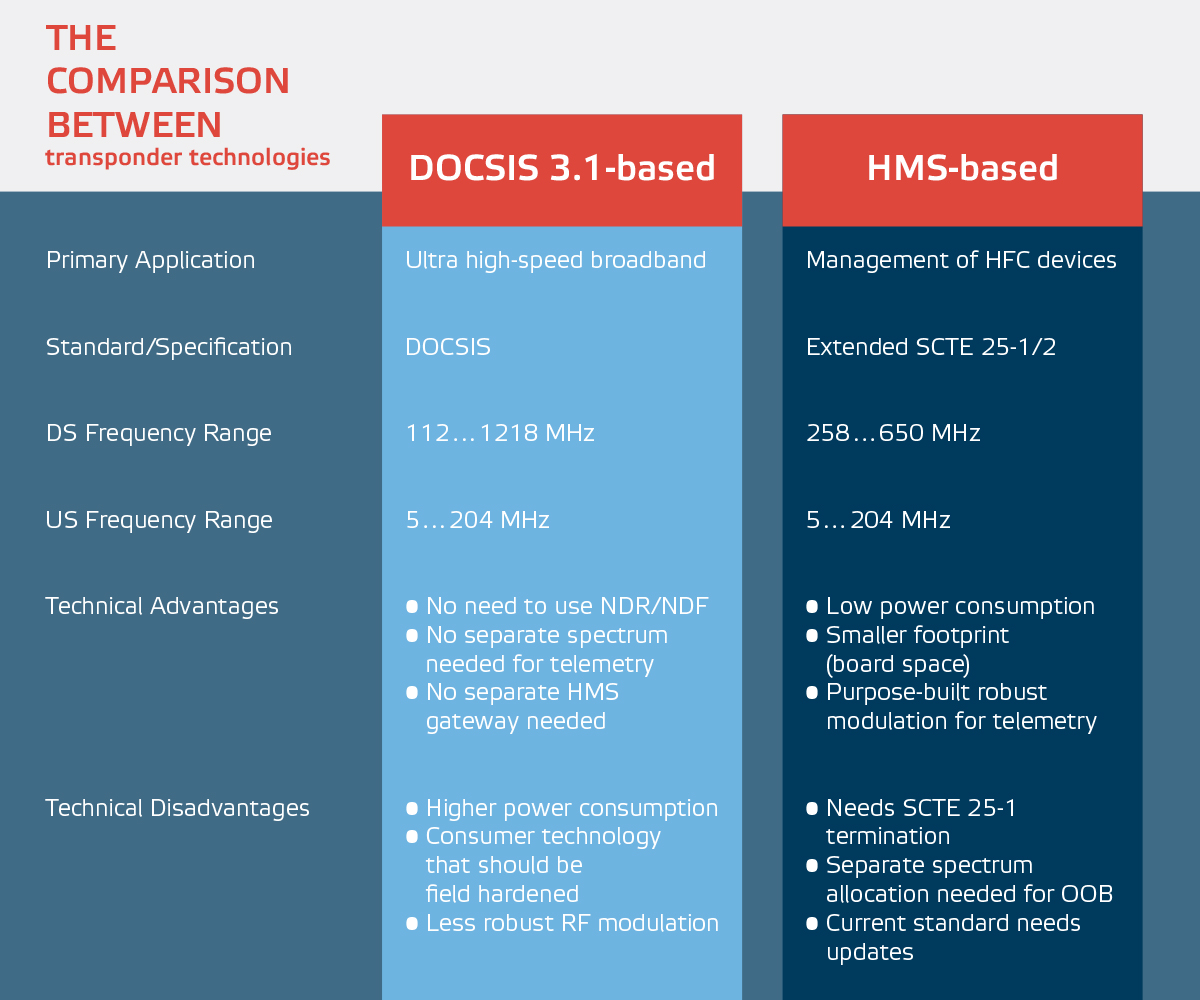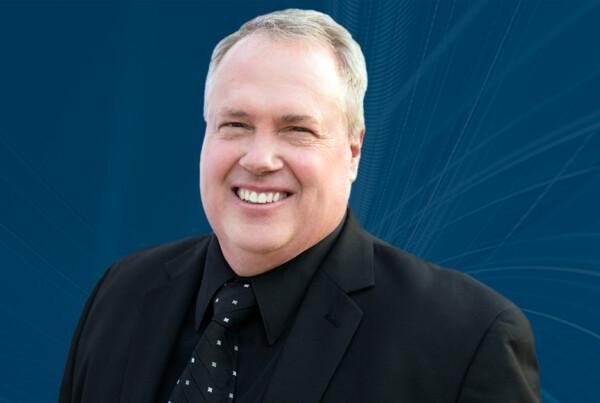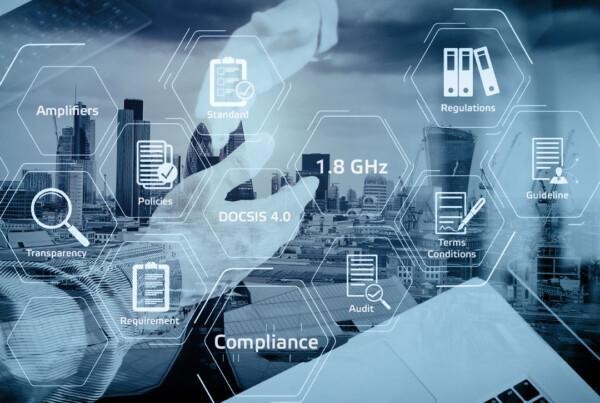With the advent of DOCSIS 4.0 and the deployment of next-generation amplifiers, Cable MSOs are carefully analyzing whether new amplifiers should include transponder modules in addition to native intelligence. Although native intelligence offers significant benefits, it is insufficient for remote connections to the amplifiers. Cable network amplifiers equipped with transponders enable various functions via remote connections, including managing network disturbances, activating remote alarms, capturing spectrum data, and conducting amplifier diagnostics. In the future, these functionalities will become increasingly significant as cable MSOs strive to maintain high network uptime and provide exceptional subscriber services.
A looming issue with the transponders is that the current DOCSIS 3.0-based technology is nearing the end of its lifecycle. The industry now faces a decision: should future transponders be based on DOCSIS 3.1 technology or its counterpart HMS technology?
HMS technology originated in managing cable television network elements with high density and strict footprint requirements and has evolved into a communication method that is exceptionally robust yet low in bandwidth. However, while some DOCSIS 3.1 upstream modulation alternatives also provide significant robustness, their use would not enable ‘in-band’ communication. This implies that the same spectrum would not be utilized for both telemetry and subscriber broadband applications.
Additionally, the lifecycle of HMS is more focused on network management than on subscriber services, and a single HMS generation can span multiple DOCSIS generations. However, choosing between these technologies is challenging, as the shift towards distributed access signals the need for an updated version of the HMS, which we can refer to as HMSv2.

Comparison of Transponder Technologies
It would be extremely beneficial to explore Teleste’s recent article for a deeper comparison of these technologies. Nevertheless, here are some key questions to consider:
- Is a technology dedicated to managing HFC devices more operationally beneficial than one that primarily focuses on subscribers?
- In less-than-ideal field conditions, how significantly does the use of purpose-built, robust modulation contribute to improved service reliability?
- Beyond technical aspects, does the cost difference between DOCSIS and HMS transponders play a crucial role in mass-producing next-generation 1.8 GHz amplifiers?
Ultimately, the critical question is whether the industry can afford to remain indecisive. Supporting two complementary technologies often leads to increased product prices. Additionally, when considering the total cost of ownership that these technologies offer, it’s important to contemplate whether factors like the maximum allowed 1.8 GHz amplifier power consumption should influence the final decision.
Please see our earlier reality check as well: Powering of 1.8 GHz amplifiers
About the author
Steve Condra, Director, Engineering and Product Management of Teleste Intercept
Steve Condra has more than 30 years of experience in the Telecommunication industry. He spent 16 years with AT&T, Bell Labs, and Lucent Technologies primarily in outside plant design, manufacture, and installation. In addition, he spent 18 years in the Cable TV industry with Scientific Atlanta, Cisco, and Teleste primarily in HFC infrastructure including R&D and Product Management. Steve earned a Bachelor’s and Master’s degree in Mechanical Engineering from the University of Missouri.






